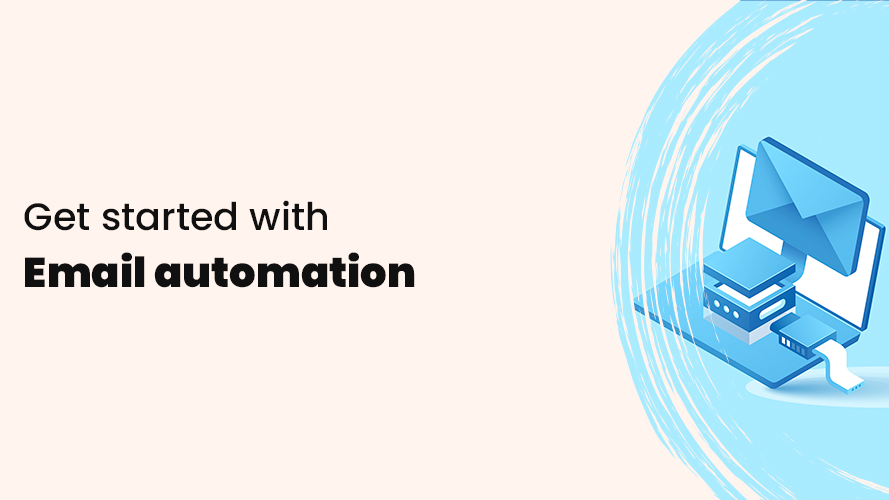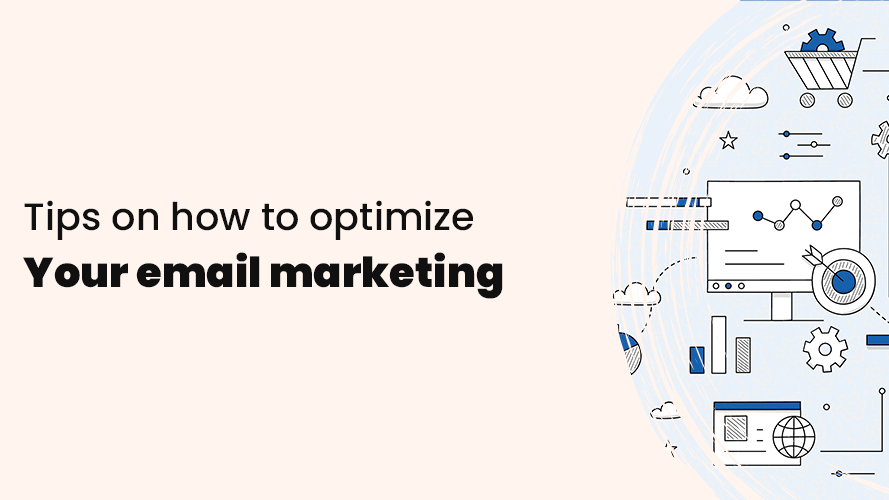How to write
Email subject lines that get opened
Find out why the email subject line is crucial within email marketing and how to improve yours with practical tips.
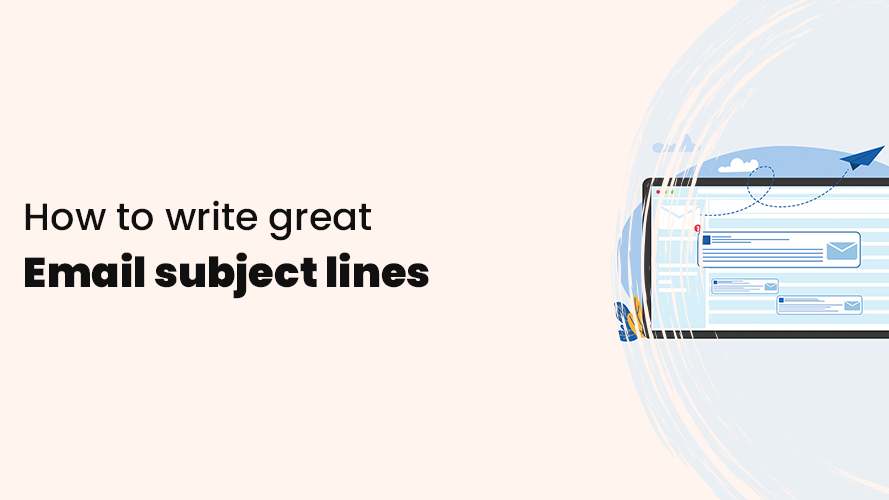
An email subject line is the first thing subscribers see in their inbox and can be the deciding factor in whether or not they open your email. It should not only capture the reader’s interest and be inviting, but also convey a promise of what the reader will get when they read your email.
As you can see from the above, it all starts with your subject line and with today’s impatience and fast clicks, every word in it can have a big impact. So, if you want your emails to be read, you must spend time on your subject lines.
So how do you write a good email subject line? Let’s go over the basics of a subject line, why it’s important, and how you can improve it with practical tips.
What is an email subject line?
A subject line is a short and descriptive line of text that appears in the recipient’s inbox and is designed to give a teaser of the content of your email. It works much like a headline for your email and needs to be written to grab the recipient’s attention and thus get them to open and read the email.
Why is the email subject line important in email marketing?
Subject lines are crucial to the success of your email campaigns and serve several important purposes. They tell subscribers what they can expect to find in your email and by being clear about this, you reduce the risk of recipients feeling deceived or disinterested.
Good email subject lines can make a big impression on your subscribers and capture their interest, influencing their decision to open your email or ignore it.
As you may have realized by now, the subject line should make your subscribers want to open and read your email. It can help you build anticipation and create curiosity or a sense of urgency. Use this to your advantage when designing your email campaign.
In addition, subject lines can be customized for different segments of your email list, making the content more relevant to specific audiences. Personalized subject lines with, for example, the recipient’s name can further increase engagement.
How long should an email subject line be?
There is no perfect length that works for every subject line. The ideal length will vary depending on your target audience, industry, and the specific content of each email. As a general guideline, you should stay short and not exceed 6-8 words or 50-60 characters.
If you use a longer email subject line, not all will be visible, especially on mobile devices. In many cases, there is only space for 5-6 words on mobiles, which limits how much of the subject line your subscribers see, but this can vary depending on the screen size.
You should therefore make sure to customize the subject line so that the most crucial part is always visible on both mobile and desktop. To be on the safe side, you can test sending to yourself and check on different devices if you can read the whole subject line or see where it breaks.
Remember that the figures above on keeping email subject lines between 6-8 words or less than 50-60 characters are guidelines only. The value of the words matters more than the number of words used. So don’t feel limited by these numbers when writing them.
Tips on how to write better email subject lines
Make the subject line relevant to the recipient
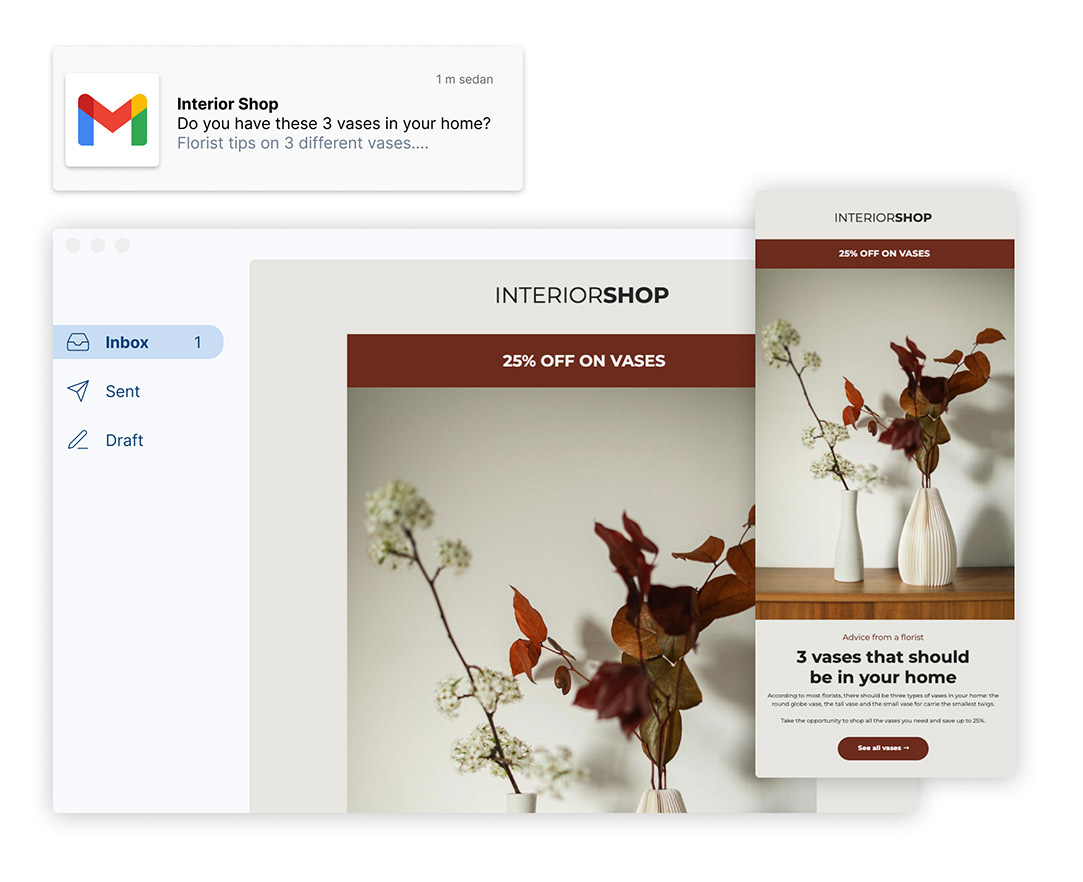
Your email subject lines should contain information relevant to the recipient and give a preview of what content they can expect to find if they open your email.
If you have larger email lists, you can increase relevance by segmenting your audience into smaller groups. It allows you to send different messages to different segments and customize the subject line for each audience based on their interests or needs.
For example, if you are going to lead your subscribers to a product, you should have a subject line that talks about the value or relevance of the product:
- Jackets for the fall – 20% off everything!
- Give your kitchen more spacing with these simple solutions
Great email subject lines give a promise and then deliver on that promise. Of course, your content needs to deliver on the promise, or you risk getting high bounce rates on your emails.
Encourage your subscribers
Once you know what your goal is with your email campaign, you can include a call-to-action in the subject line and adapt it to your specific goal. This way, it will be clear to your subscribers what the content of your email is about and can influence the recipients to open it.
For example:
- Click to take advantage of our exclusive offer
- Buy a pass before it runs out
Use FOMO – Fear of missing out
When we fear missing out on something, we feel compelled to act. Creating a sense of urgency in your subject line can help grab your subscribers’ attention and encourage them to act before it’s too late.
Creating a sense of urgency is ideal when, for example, you offer something for a limited time or when your offer applies to a certain number of people. For example:
- 4 spots left: don’t miss out on reserving your spot
- Book your seat before Friday and get 50% off
- Be one of the first 10 customers and get a goodie bag
Keep in mind that any email you send cannot be urgent. So be sure to use FOMO when it concerns a time-limited offer.
Have a clear and recognizable sender name and address
Who the sender is can have a significant impact on whether your emails are opened or not. If recipients are not familiar with the sender’s name and address, you risk scaring them away, and then it doesn’t matter how good your subject line is.
Therefore, make sure to use a sender name and address that represents your company and preferably a real name as the sender. Using a real name as the sender is good for several reasons:
- It requires no major effort on your part.
- It builds trust with your target audience
- Your subscribers perceive your mailings as personal
Avoid looking like spam
Let’s be honest. A subject line that says, for example, “OPEN THIS AND GET $100 OFF!!!!” is not going to get more people to open your email.
In fact, it has the opposite effect, as capital letters and lots of exclamation marks can make readers think your email is spam.
According to a study by the Radicati Group, 85% prefer a subject line without capital letters. It is not surprising, as no one wants to feel threatened or yelled at, which capital letters can create.
Therefore, avoid using capital letters and exclamation marks as often as possible. If you want to use capital letters, stick to a maximum of one word.
Personalize the email subject line
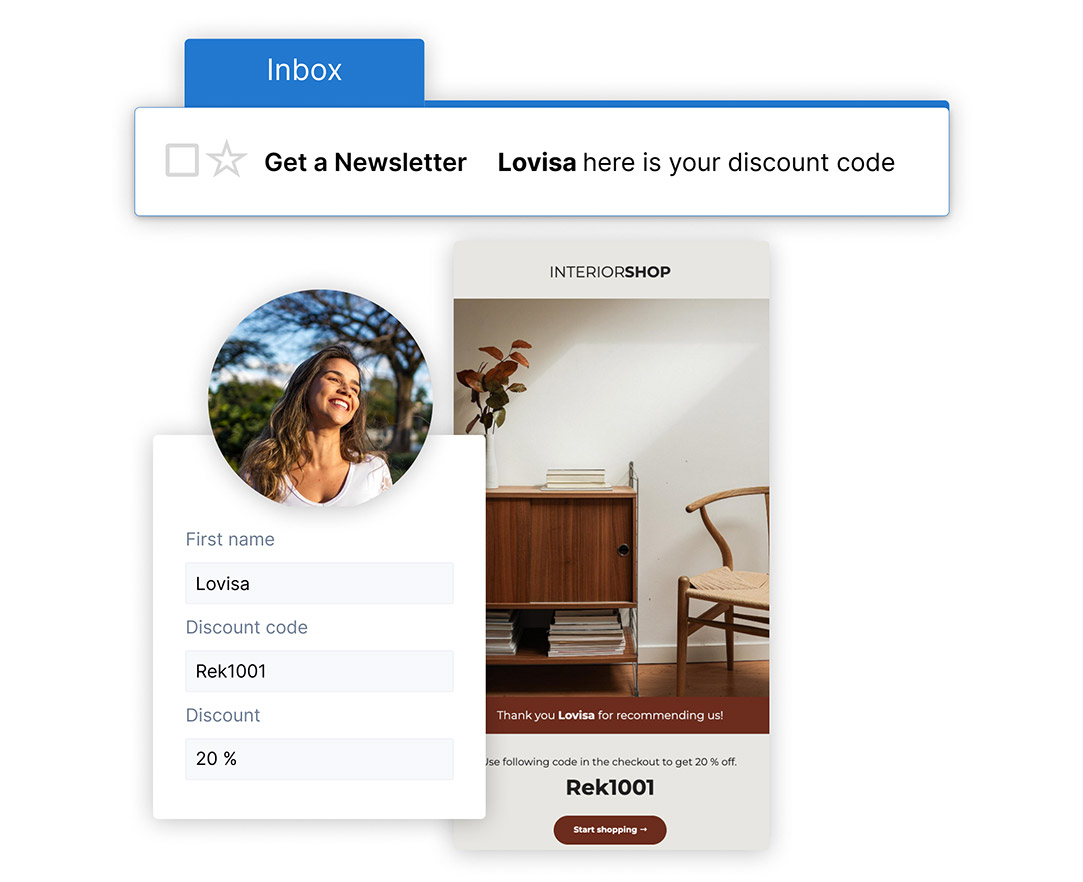
Being personal usually creates a more interesting experience and the same goes for subject lines. Adding the recipient’s name to the subject line gives subscribers a sense that you care about them.
A perfect opportunity to use personalized email subject lines can be for birthdays and special occasions. For example:
- Happy birthday Lovisa, here’s your discount code
- Emma, get up to 20% off your next purchase
Refer to a place or interest
People usually feel a connection to their hometown or the city they live in. When you include information on your subscribers’ location in the subject line, they will be curious about what is happening in their area.
The same goes for interests. By highlighting your subscribers’ interests in the subject line, you can reach and connect with them more easily. For example, you can segment your audience by their hobby or favorite team to increase relevance further.
Ask a question
Using questions in your subject lines is a great way to grab your recipients’ attention and pique their curiosity. Questions can also help to engage subscribers in the conversation and inspire them to open the email as they naturally search for an answer.
For example:
- Who else wants to save $1,000 a month?
- Who else has missed out?
- Have you also missed booking your seat?
Use numbers
In many cases, it is better to use numbers than to write everything out in words. It may be because they are more clearly defined, stand out better and the brain can process the information more easily.
For example, you can use low numbers to convey knowledge and higher numbers if your offer is about discounts.
For example:
- 10 travel destinations you shouldn’t miss
- 5 tips for a clean car
- 35% off a $79 purchase
Share knowledge
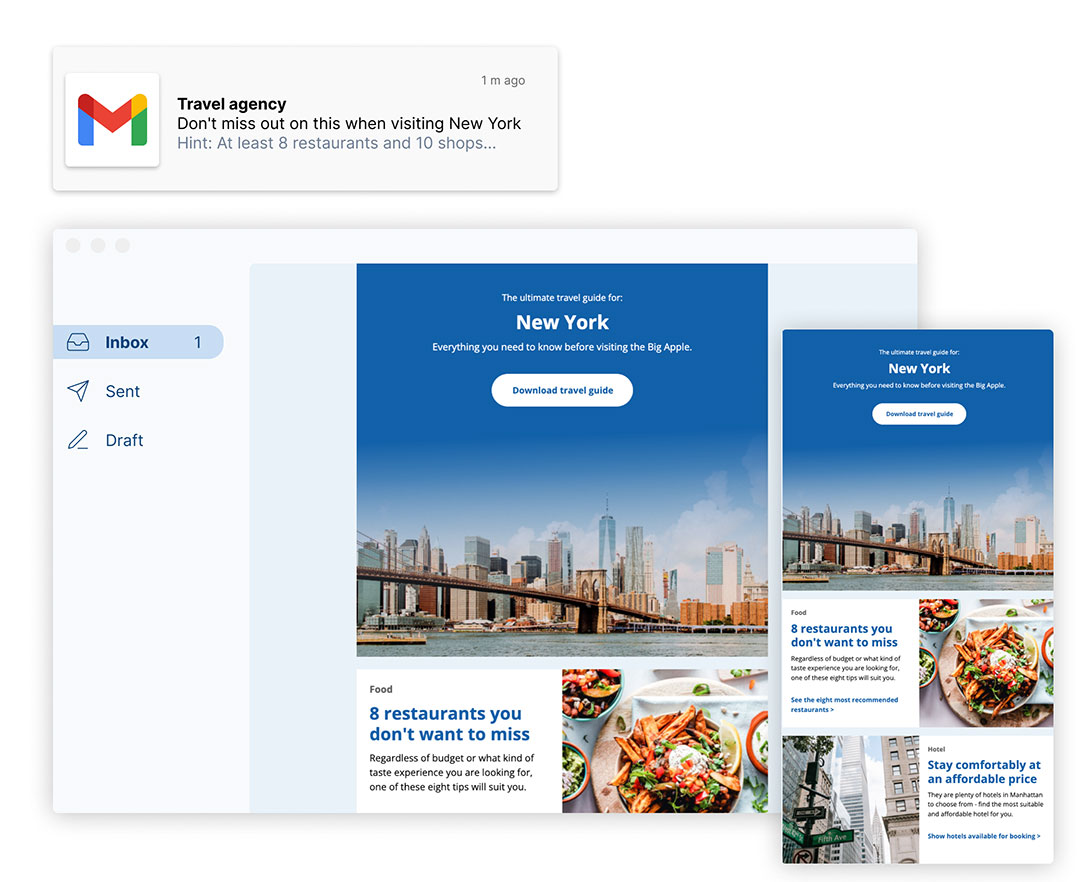
Besides building trust when you share knowledge, this type of email subject line works very well. It forces you to describe the content shortly and clearly, while creating curiosity and added value.
For example:
- Everything you don’t want to miss in New York
- What everyone who builds houses from scratch already knows
- How to quit your job and earn more money
Experimenting with emojis
Using emojis can be a fun and effective way to grab your subscribers’ attention, increase open rates, and add character to your email subject lines. However, it is important to use emojis strategically and not overuse them.
If you use emojis, make sure they align with your brand and tone of voice so that your subscribers are not negatively surprised. To find out if emojis work for your target audience, you can A/B test your subject lines with and without emojis.
Two benefits in one subject line
Email subject lines containing two benefits can be very effective. You start with the first benefit, for example, by writing “How” and round it up with another benefit.
It becomes effective when you see the links between the first and second benefits. That is, if you achieve the first benefit, the second will follow.
For example:
- How Sofia exercised and lost 10 kilos in a month
- How you can spend money and be a wealthy retiree
- How you can go to all the summer parties and save at least $50
Get started with email marketing
If your email subject line is clear and makes the reader curious about what is in your email, you will go far. Keep in mind that once the reader opens the email, the content itself needs to promise what your subject line has said and provide value to the customer.
You can continue reading the next part of the guide on how to write better preheaders or get started now with Get a Newsletter’s free plan and write better subject lines for your emails.
Get started with email marketing
Start creating & sending email newsletters for free with Get a Newsletter to easily reach your subscribers and customers.
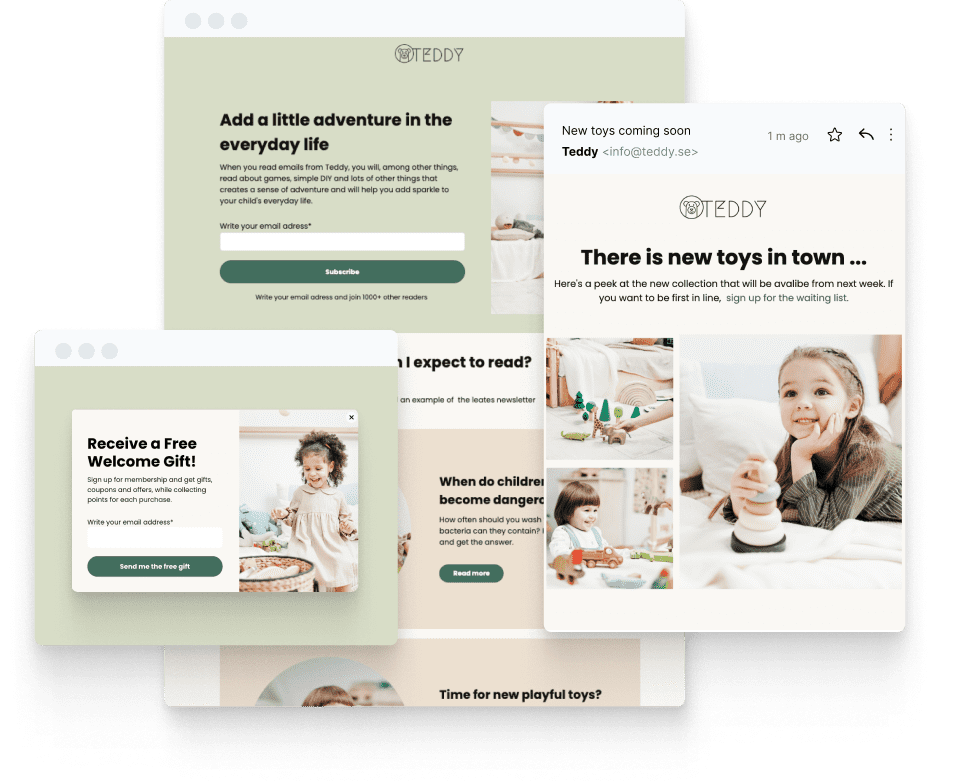
Keep reading
6 minutes
13 minutes
Get started for free
Explore newsletters, landing pages, and surveys. Market your
products and services. Increase your sales and customer loyalty.

